Buffalo 2000 grain elevator Lyalta Alberta
Known as a “Buffalo 2000” the elevator seen here in Lyalta Alberta was an innovative and advanced design for its time and was to help usher in a new and exciting era in the Canadian grain handling industry. It was the future!
However, in spite of such lofty aspirations, in the end only a three of these were ever built and they quickly become a mere footnote in history, an answer to a question no one asked. For the always cash strapped industry mass replacements ended up being just too costly a project and while the wooden elevator was an anachronism, they worked “okay”. So perhaps with blinders on, the industry moved forward with little obvious concern for the future, ignoring the Buffalo 2000. The status-quo won, for a while, but some dozen years after the Lyalta elevator was built, change would hit like an avalanche.
By the late 1970s, the Canadian grain industry was in turmoil. The prairie branchline networks was falling apart due to deferred maintenance and what was needed was a new way to process grain – make the trains larger and this would mean more profits so lines could be rebuild and the overall efficiency increased. Get rid of he old fashioned and replace them with the new and state of the art., Load more and do so more efficiently – a win-win situation for everyone it seemed.
However after experimenting with a number of configurations, one being the similar Buffalo Slope design first and then later the Buffalo 2000, it was found that after all the costs were added up, it was just too expensive to replace the current system, as bad as it was.
The ideas was right – concrete elevators instead of wooden, large trains replacing the small ones, instead the changes were even more dramatic. Just build super sized inland terminals, truck the grain there from outlying areas, and abandon all but the busiest rail lines, then load one hundred cars or more at a time instead of dozens. That’s what ended up happening and in the wake of this most wooden elevators were demolished and the branch lines closed. Now finding any traditional elevator standing is something.
What makes this structure so interesting is that it was to be the future, but all that aside the experiment ultimately failed.
The elevator seen here, in Lyalta Alberta, was built in 1982. Around that same time, two very similar structures were also built in Foremost and Boyle Alberta respectively. The former still stands but Boyle’s was torn down recently. I understand it took many months to dismantle!
Not just unique on the outside, this design was also innovative on the inside with advanced grain and dust handling systems. So it would store more, load more and do it all quicker and safer.
In addition to this elevator, this author has seen pictures showing a traditional wooden example standing right next to it. It appears it was torn down in the 1990s. I have no solid data but have seen mention that that grain cars may have been loaded at the Buffalo 2000 elevator into the year 2000.
The elevator, originally owned by the Alberta Wheat Pool, was later sold to the Canada Malting company, which still owns it to this day. AWP’s colour was the light blue (or green) seen gracing its sides. You always knew which town you were in by looking at a grain elevator and Lyalta was no different and the town’s name is emblazoned across the side of the structure.
Remarkably, a few old style traditional wooden cribbed elevators were built AFTER the Buffalo 2000 was constructed!
Lyalta is a small town not terribly far from Calgary, just east of town in fact. Outside of an out-of-place looking gated golf community just north of town, amidst grain fields, the place itself is home to a few buildings and homes and the elevator. That’s it.
Never more than a flag stop on the rail line, a small town in other words, the track here is currently being used to store excess railcars and at the time of my visit, they stretch off into the horizon. These cars are what’s known as centre-beams and they carry lumber, an industry which is often in the doldrums and cyclical, Some of the cars are only a few years old, but I am sure will be called to service at some point.
The line here used to be Canadian National Railways secondary main between Calgary and Saskatoon, and is abandoned just east of here. Formerly, it was a fairly busy place, but changes in traffic patterns sealed its fate and most of it was closed to traffic in 2009. A small stub of the line in from Calgary is used to serve a new grain terminal just west of Lyalta and some the Saskatoon end is in use too, as far as Oyen, but the section in the middle, through Drummheller and Hanna is closed although the rails have not been taken up yet.
It was opened to traffic in 1914 and there has been talk of selling the line to a short line operator, although so far it’s just talk.
To see some other elevators we’ve explored, follow these links…
Prairie sentinels – Three Hills Alberta.
Prairie sentinels – Delia Alberta.
A prairie sentinel falls – Torrington Alberta.
If you wish more information on this place, by all means contact us!
Date: January 2013.
Location: Lyalta, AB.
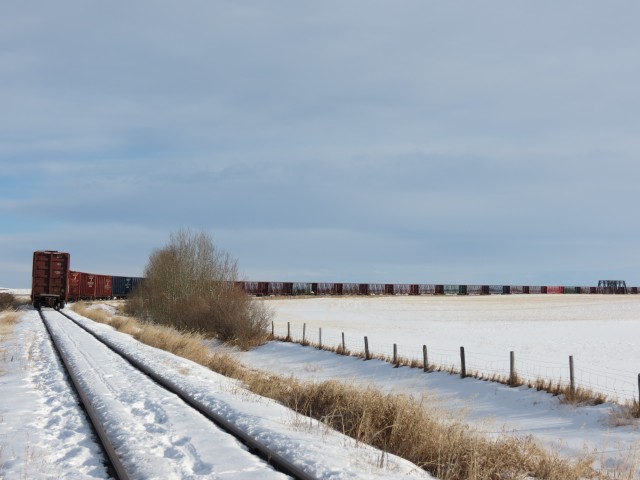
Stored rail cars stretch off in the distance.
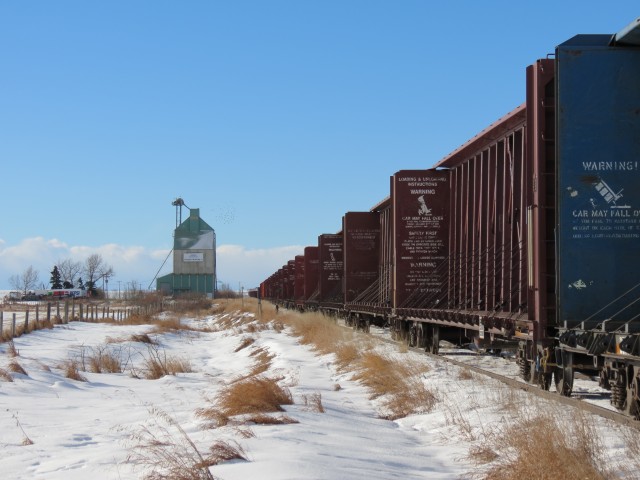
Lyalta is along the old CNR line between Calgary and Saskatoon.
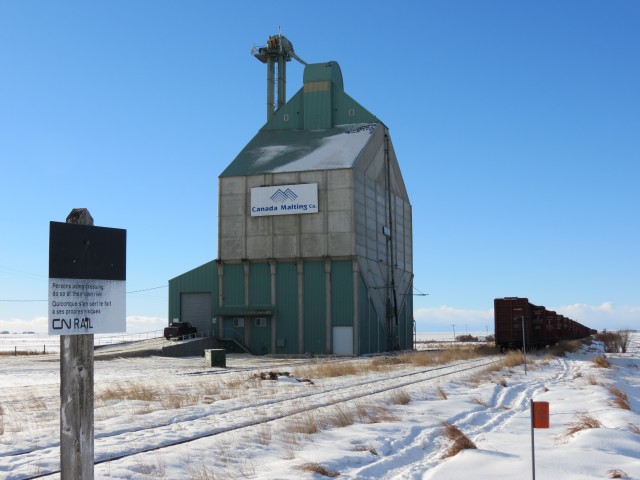
This advanced elevator design was known as a “Buffalo 2000”.
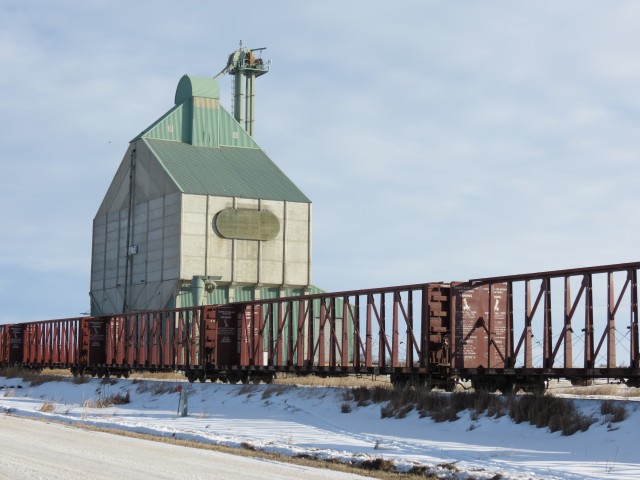
It appears a train is passing but they are just stored rail cars.
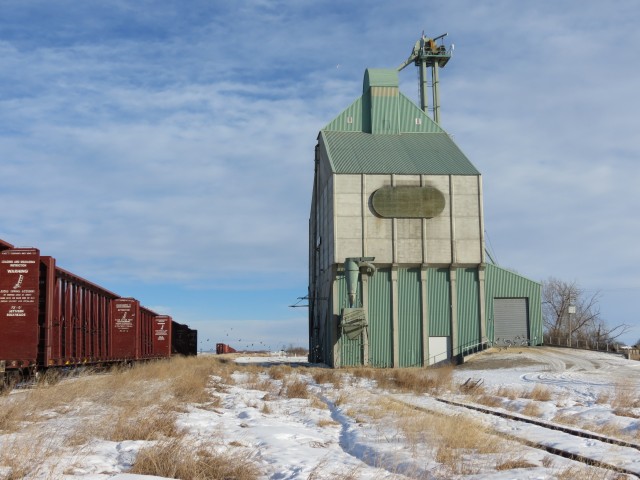
This is one of three of this design made but I believed more were planned.
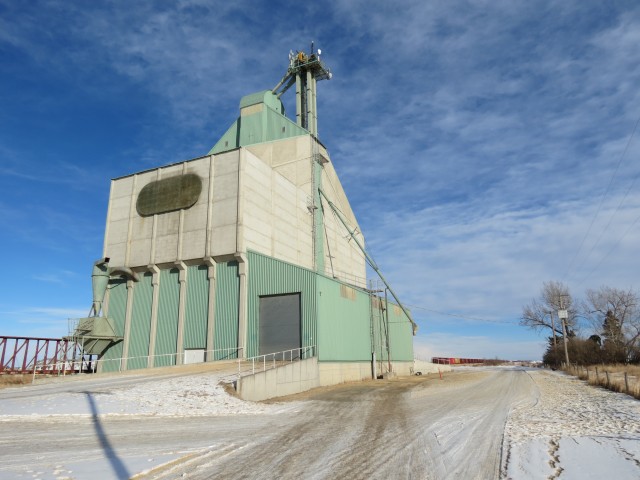
It once belonged to the Alberta Wheat Pool.
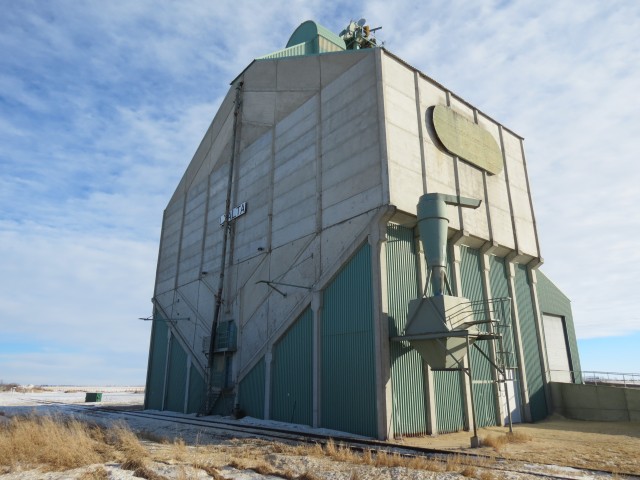
They planned to replace older designs with this one.
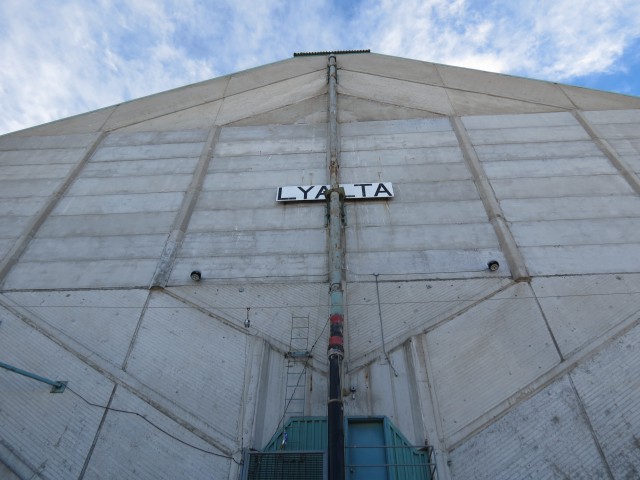
You always knew which town you were in by looking at a grain elevator.
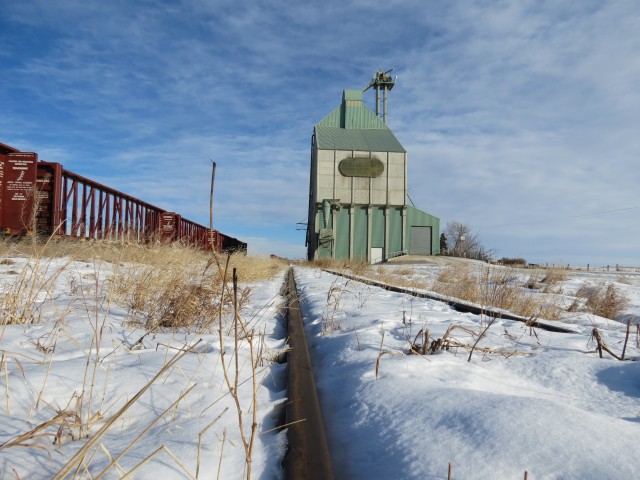
It’s been over ten years since railcars were loaded here.
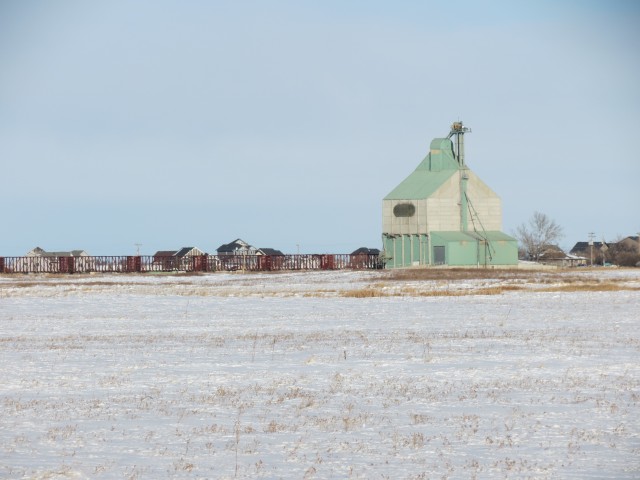
Stored rail cars and the Lyalta grain elevator from a distance.

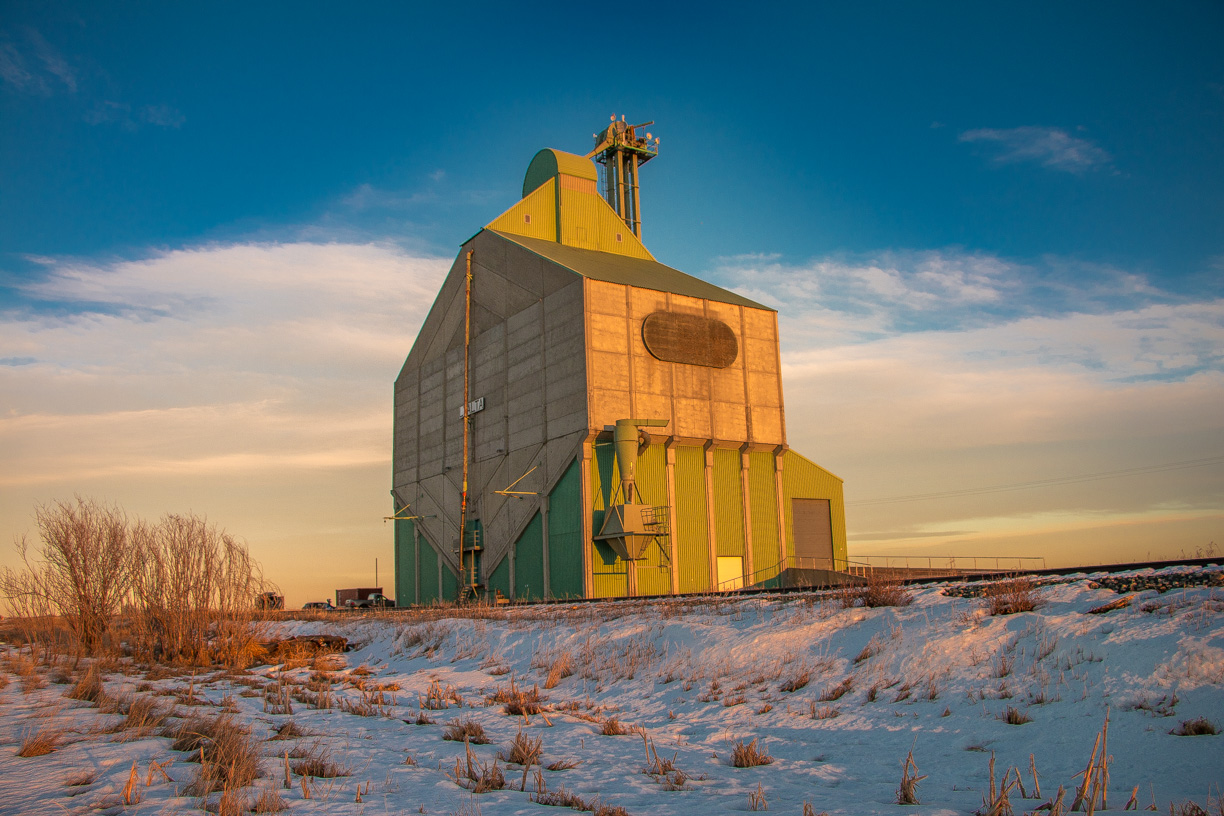
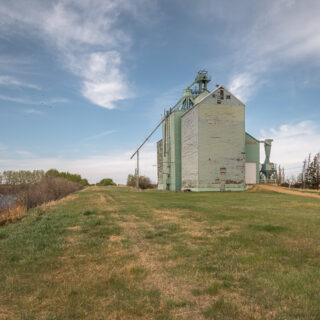
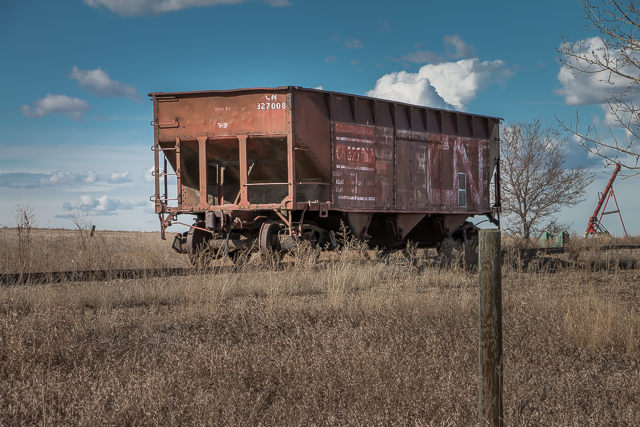
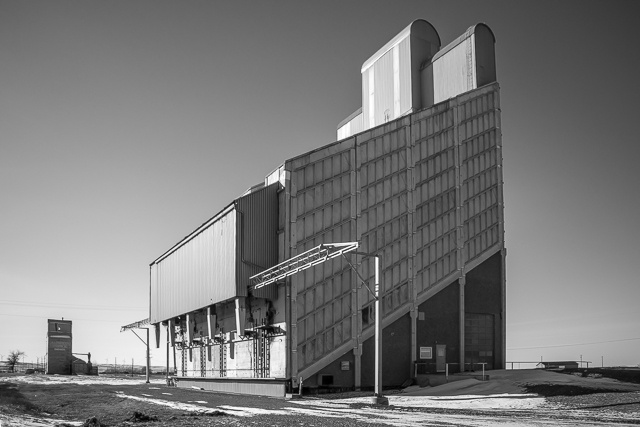
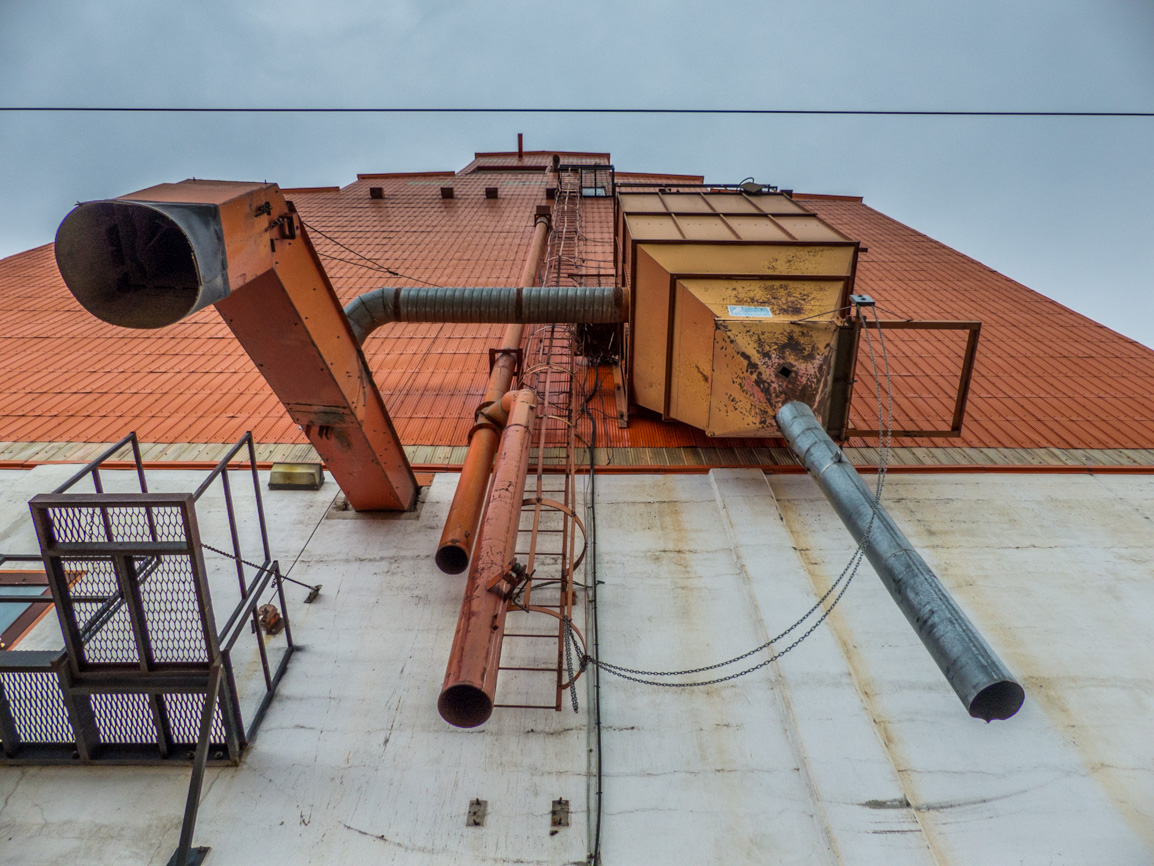
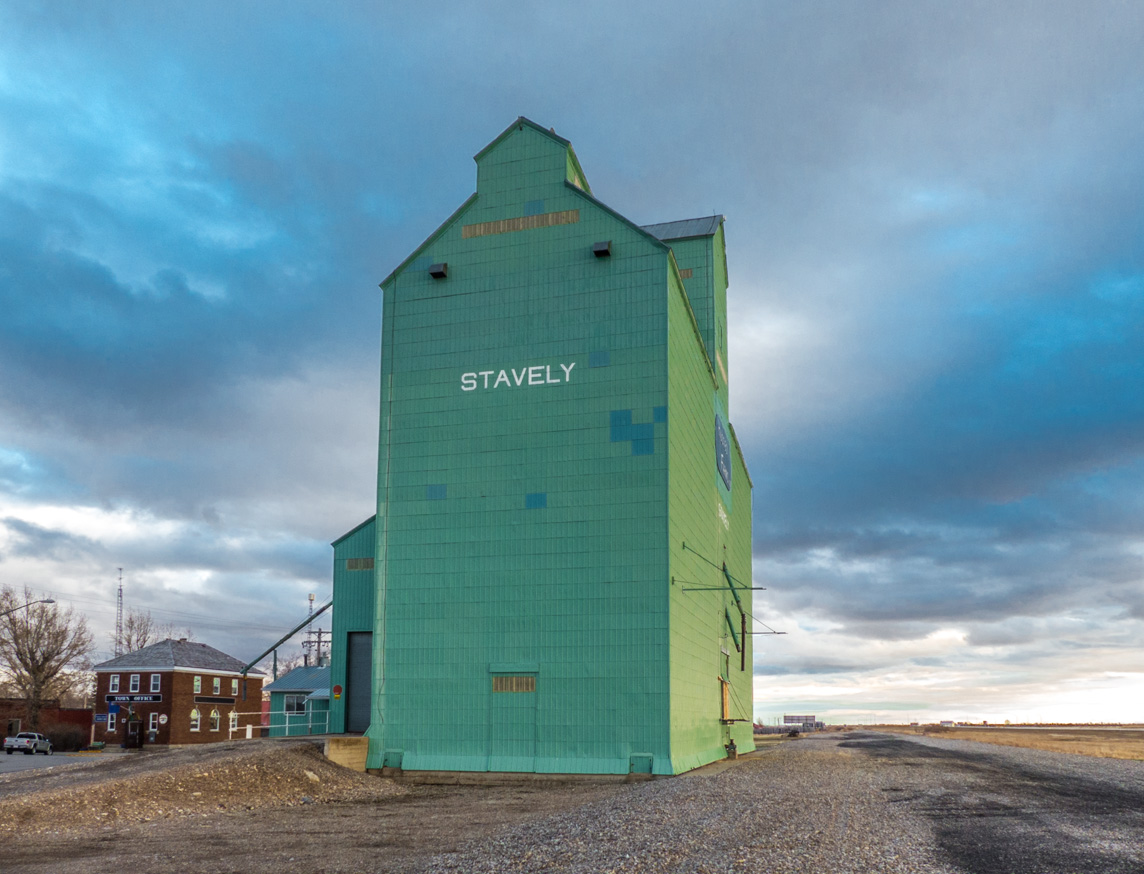
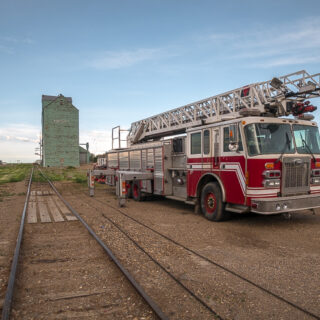
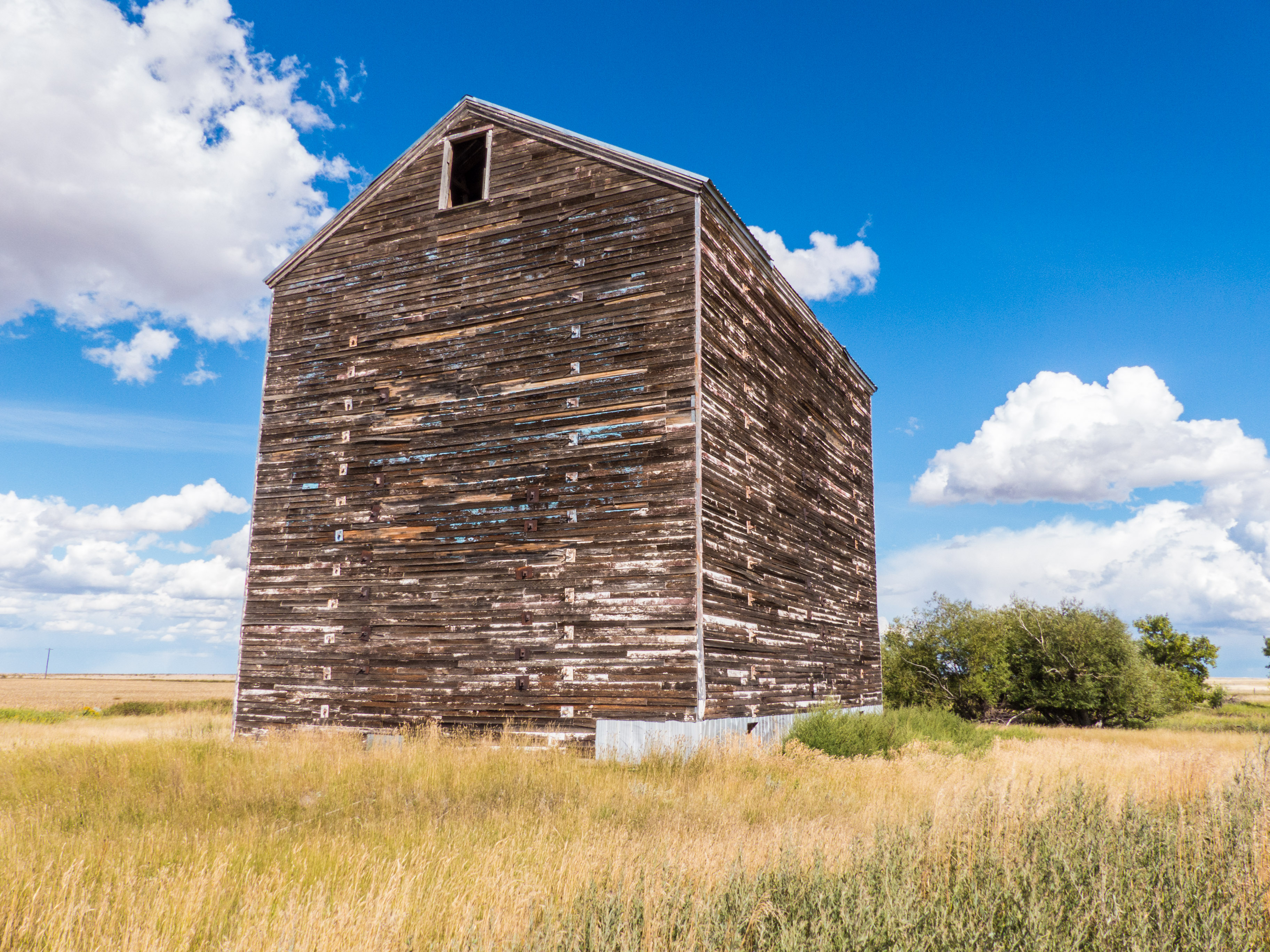
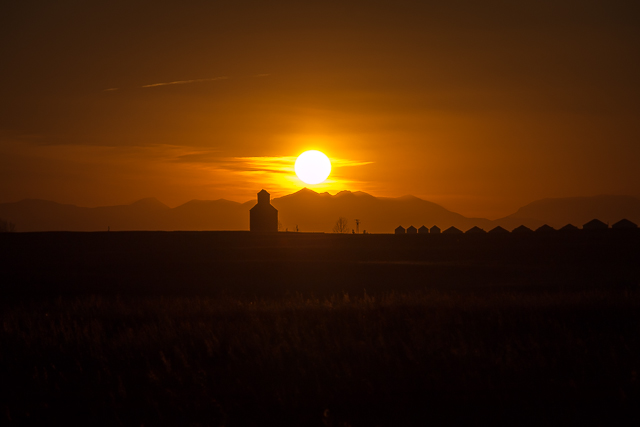
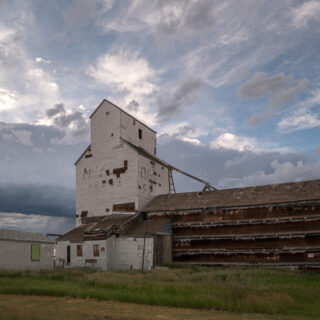
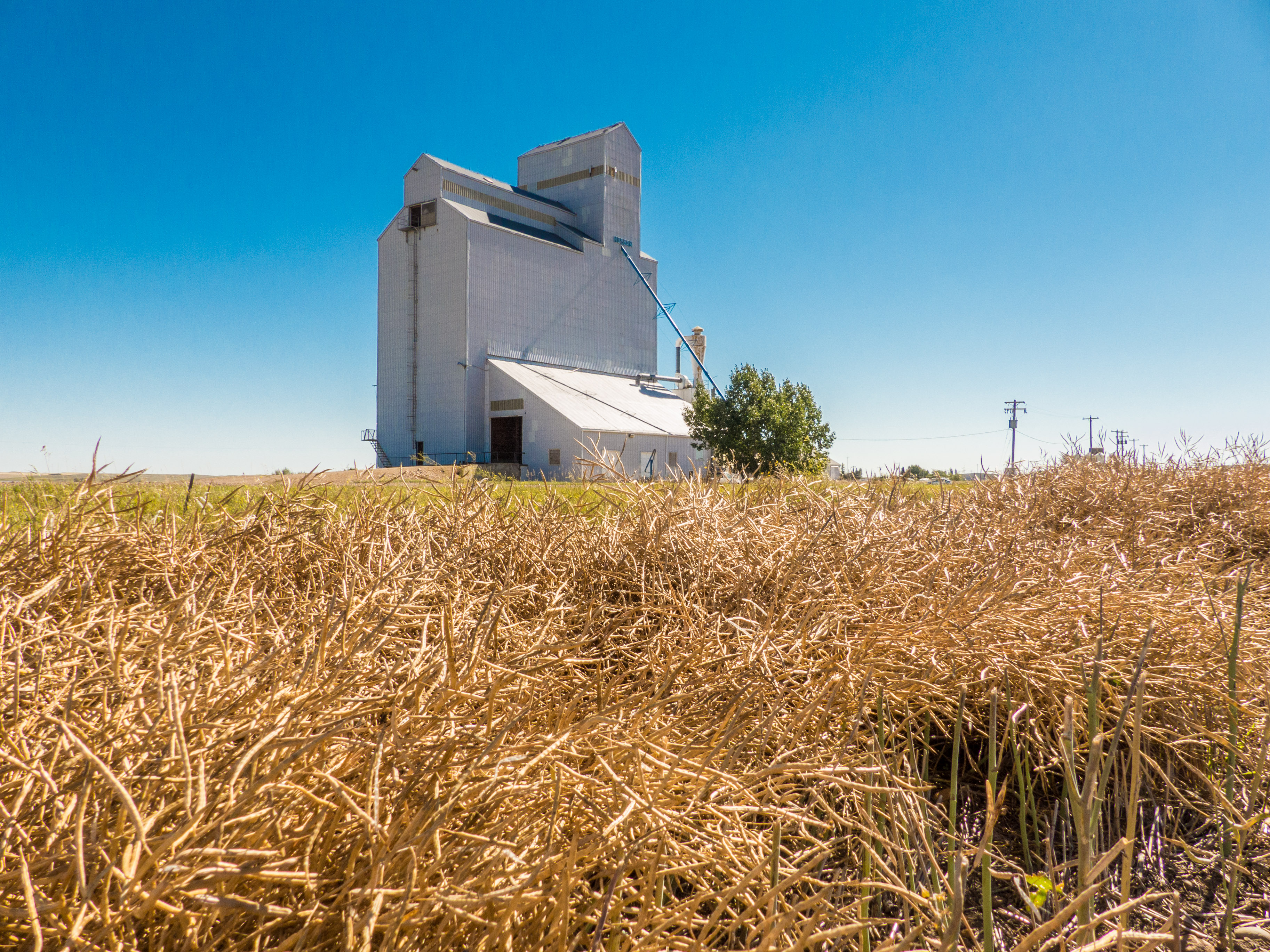
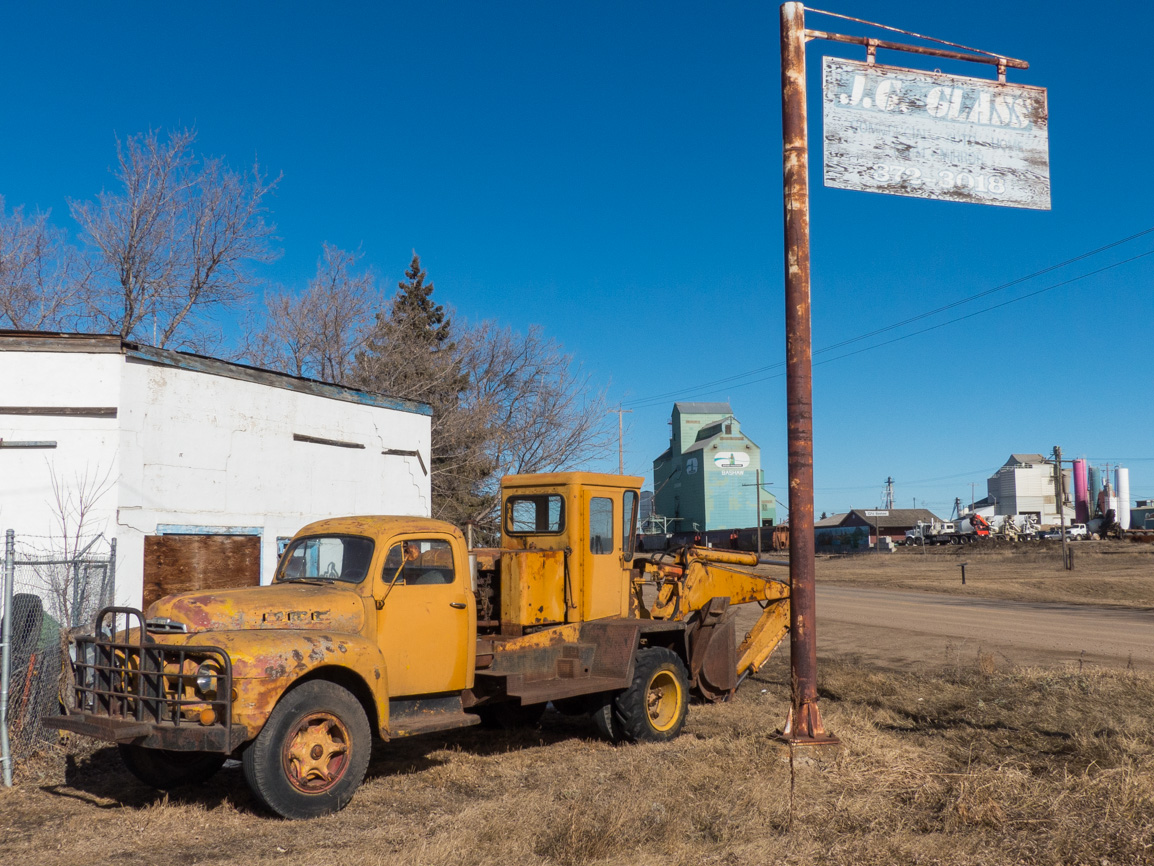







Hi there, I enjoy reading through your blog. I wanted to write a little comment to support you. My father was a cement worker on the Lyalta elevator and I even recall visiting the site when it was being built. I was still a small kid. I think there was a wooden elevaotor on one side of it.
Awesome, I would have loved to see it under construction.
An impressive structure! I have just forwarded this to a co-worker who is a big fan of grain elevators.
It is a very cool grain elevator.
The elevator in Boyle was demolished in May 2010 and I have seen pictures of it. It must have been a lot of work and not nearly as easy as tearing down a wooden one!
Thanks. Yes, I could see it being a LOT of work.
I believe it took them about 4 months to take it apart… when I was up there last summer… I could barely locate where it was!
Wow, I knew tearing it down would be tough.
The Buffalo design was discontinued because of difficulties during the construction process. The concrete used in the chutes had to be poured under a specific temperature range, or the grain would not flow freely down the chutes. There would be a slight roughness on the low side of the chute, which would impede flow, leading to a total plugging of the chute. The original elevator of this type at Buffalo, AB, on the now abandoned CPR Bassano Sub., worked fine, but other attempts using this design experienced clogging problems. The cause was found to lead back to the temperature at the time the concrete was poured. This lead to an unacceptable increase in construction costs. On recent elevators you now see that the grain flows through large metal pipes.
As to your point that the CN line is abandoned, I direct you to the following story on the TRAINS Newswire about a group looking to form a shortline called the Badlands Railway. I’m not sure of its’ current status.
http://trn.trains.com/Railroad%20News/News%20Wire/2010/02/Nascent%20short%20line%20files%20to%20buy%20dormant%20Canadian%20National%20line.aspx
Bruce
Thanks for the input Bruce. I never knew an elevator of this type existed in Buffalo. but given the name of the design I guess it makes sense. I was told construction costs for the Buffalo 2000 were high, but no one elaborated as to why. Your information helps put one more piece in the puzzle. I was aware of attempt to purchase the line by a short line company, but so far all I hear is talk. One can hope though. I can see why the CNR hated the now abandoned section. There are a lot of bridges in the badlands to maintain. Over I hundred I was told.
You are correct and the one in foremost is still there and the one in boyle is not.